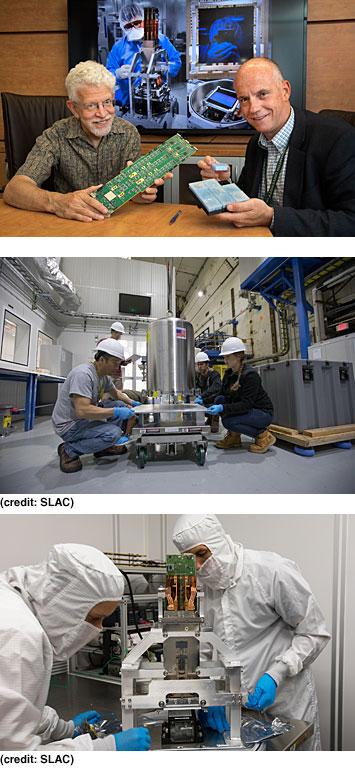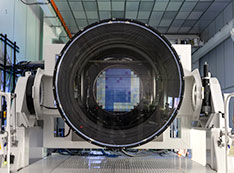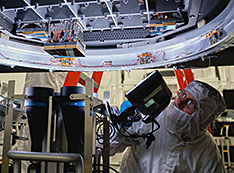First Brookhaven-Built Sky-Imaging Sensor Array Arrives at SLAC
November 21, 2017
The first of 21 “science rafts” being assembled by a team of technicians, engineers, and scientists at the U.S. Department of Energy’s Brookhaven National Laboratory for a 3.2-gigapixel sky-imaging camera arrived at SLAC National Accelerator Laboratory this week. The rafts are arrays of nine imaging sensors, or charged coupled devices (CCDs), each with 4000-by-4000 pixels, that will make up the “film” for the camera at the heart of the Large Synoptic Survey Telescope (LSST).
The LSST camera will be the largest digital camera ever built for astronomy and astrophysics. It will provide researchers with the widest, deepest, and fastest views of the night sky for unprecedented studies of the Milky Way, the solar system, dark matter, dark energy, and much more. SLAC is assembling and testing the camera from parts built by a large collaboration of labs and universities.
The CCDs, which are coupled to precision electronics, have optimal performance at a super-chilly -100 degrees Celsius. To avoid damage due to adverse environmental conditions, each raft assembled at Brookhaven is shipped in an environmentally controlled bell jar, which is sealed and pressurized with dry nitrogen. That keeps the sensors free from contamination and moisture, both of which could damage the raft and interfere with its ability to see deep into the cosmos.
The Brookhaven team has completed assembly of eight rafts to date, and will ship one every few weeks over the next year. Learn more about Brookhaven’s role and the LSST project.
Brookhaven’s work on the LSST is funded by the DOE Office of Science.
Brookhaven National Laboratory is supported by the Office of Science of the U.S. Department of Energy. The Office of Science is the single largest supporter of basic research in the physical sciences in the United States, and is working to address some of the most pressing challenges of our time. For more information, please visit science.energy.gov.
2017-12638 | INT/EXT | Newsroom









